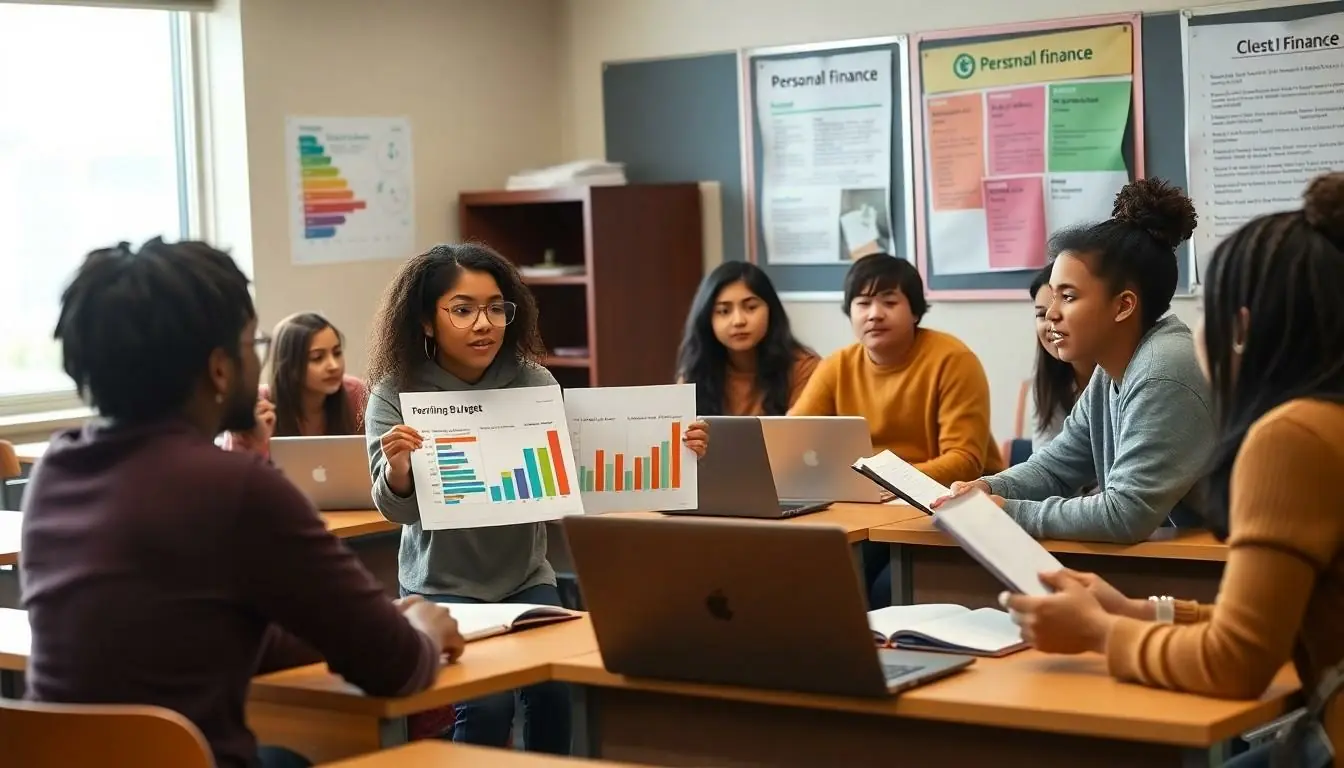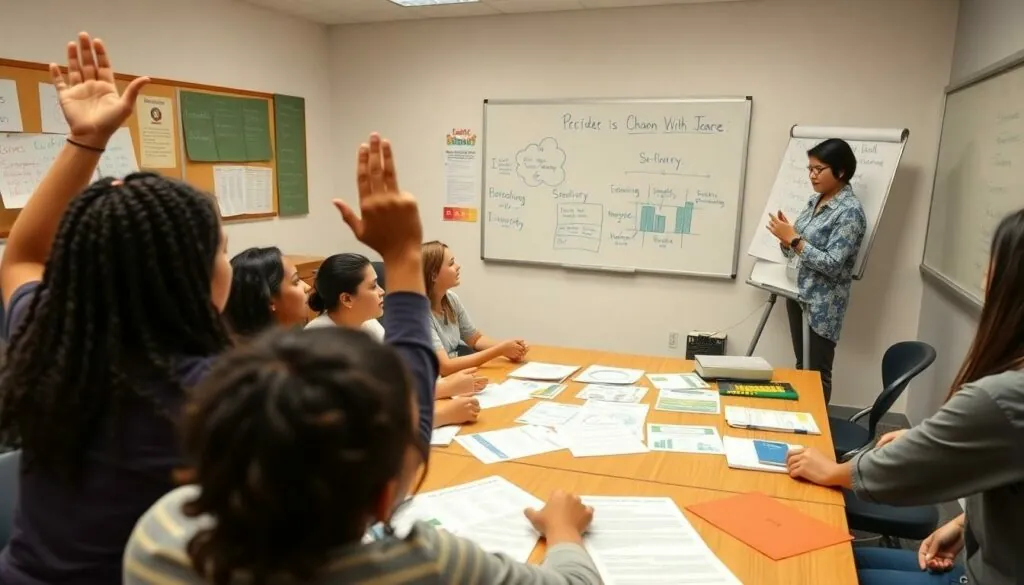Table of Contents
ToggleNavigating the world of personal finance in high school can feel like trying to find Wi-Fi in a remote cabin—confusing and frustrating. But understanding money management at this stage is crucial. It’s not just about surviving on ramen noodles; it’s about building a foundation for financial independence that’ll last a lifetime.
Imagine walking into adulthood armed with budgeting skills, investment knowledge, and a solid grasp of credit. That’s the power of personal finance education. It’s like having a cheat code for life’s money game. So why should high schoolers care? Because mastering personal finance now means less stress later. After all, nobody wants to be that adult still figuring out how to balance a checkbook while wondering where all the money went. Let’s dive into the essentials of personal finance and why it’s the ultimate life skill every student should learn.
Understanding Personal Finance In High School
Personal finance education in high school equips students with vital money management skills. Learning these concepts early fosters financial independence throughout life.
Importance Of Financial Education
Financial education holds significant value for high school students. It prepares them for real-world challenges such as managing budgets, saving, and understanding credit. Studies indicate that financial literacy reduces anxiety related to money matters. Students gain confidence in making informed decisions about their finances. Early education promotes responsible spending habits and encourages saving for future goals. Research from organizations like the National Endowment for Financial Education emphasizes the positive correlation between financial knowledge and financial wellbeing.
Key Components Of Personal Finance
Key components of personal finance include budgeting, saving, investing, and credit management. Budgeting helps create a clear financial plan for handling daily expenses. Saving emphasizes the importance of emergency funds and future goals. Investing introduces the concept of growing wealth over time through stocks or bonds. Understanding credit management prepares students for responsible borrowing and maintaining good credit scores. Each component reinforces the overall lesson of responsible financial behavior, essential for achieving long-term financial success.
The Role Of Personal Finance Curriculum

The personal finance curriculum plays a crucial role in empowering high school students with essential financial skills. This education fosters a foundation for long-term financial stability and informed decision-making.
Common Topics Covered
Budgeting remains a cornerstone topic, illustrating how students can effectively manage their monthly expenses. Saving is also emphasized, highlighting strategies for setting aside funds for emergencies and future goals. Investing introduces concepts like compound interest and the importance of building wealth over time. Credit management teaches students about responsible borrowing and maintaining healthy credit scores. These topics collectively enhance financial literacy and prepare students for real-world challenges.
Teaching Methods
Interactive workshops engage students in practical applications of financial concepts. Group projects foster collaboration while simulating real-life financial scenarios. Online resources provide access to budgeting tools and investment platforms, making learning more accessible. Guest speakers from financial industries share insights and experiences, creating connections between theory and practice. These diverse teaching methods contribute to a comprehensive understanding of personal finance, encouraging students to apply what they learn.
Benefits Of Learning Personal Finance Early
Understanding personal finance during high school presents several advantages. Students can navigate financial situations with confidence and knowledge gained from early education.
Real-Life Applications
Personal finance lessons translate seamlessly into everyday situations. Students learn to create and manage budgets, making decisions that affect their immediate finances. Learning about saving helps them prioritize needs over wants, ensuring they spend responsibly. Investment principles teach the importance of growing money, even in small amounts. Practical applications like these foster skills that students will use throughout adulthood.
Preparing For Future Financial Independence
Financial independence starts with sound education. Students gain a foundational understanding of credit management, essential for future borrowing and loans. They learn to build credit scores, which can influence future opportunities like applying for homes or cars. Programs focused on investments show how to grow wealth, instilling habits crucial for long-term success. By building these skills early, students position themselves for a lifetime of financial stability.
Challenges In Implementing Personal Finance Education
Implementing personal finance education in high schools presents several challenges. One significant barrier involves curriculum development. Many educators face difficulties in integrating financial concepts into existing subjects without detracting from core material.
Resources also play a crucial role. Teachers often lack access to up-to-date materials and training that cover all facets of personal finance. State education standards vary, making it harder to establish a universal approach.
Another challenge relates to student engagement. High school students may view financial topics as dull or irrelevant to their lives. Making content relatable is vital to capture their attention and maintain interest throughout the course.
Parental involvement can also prove problematic. Some parents may not have adequate financial knowledge themselves, limiting their ability to support their children’s learning. This lack of backing can hinder students from applying the concepts taught in class.
In addition, socioeconomic disparities among students can affect learning experiences. Students from lower-income households may face barriers such as insufficient access to technology, diminishing their ability to engage with educational tools or resources.
Finally, measuring the effectiveness of personal finance education presents its difficulties. Standard testing methods may not adequately evaluate students’ understanding of complex financial concepts. Educators need alternative assessments that accurately reflect student learning and application.
Addressing these challenges requires a dedicated effort from educators, policymakers, and communities to create a more robust and engaging personal finance curriculum.
Personal finance education in high school is crucial for equipping students with the skills they need to navigate their financial futures. By learning about budgeting saving investing and credit management early on students can build a strong foundation for financial independence. This knowledge not only reduces anxiety around money matters but also fosters responsible spending habits and informed decision-making.
As schools strive to implement effective personal finance curricula they must overcome challenges related to resource availability and student engagement. However the long-term benefits of financial literacy far outweigh these obstacles. Empowering students with essential financial skills today sets them up for a lifetime of financial stability and success.




